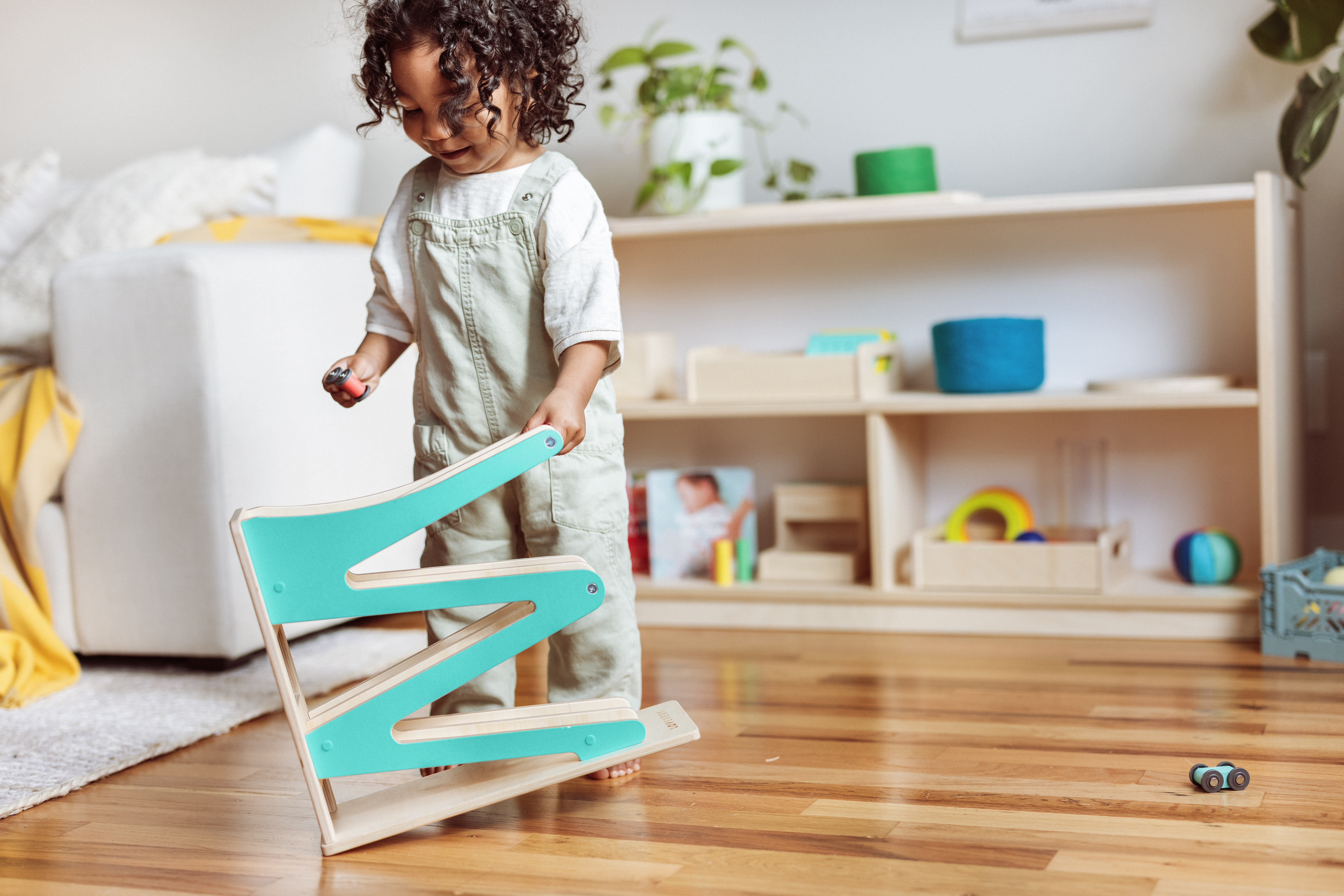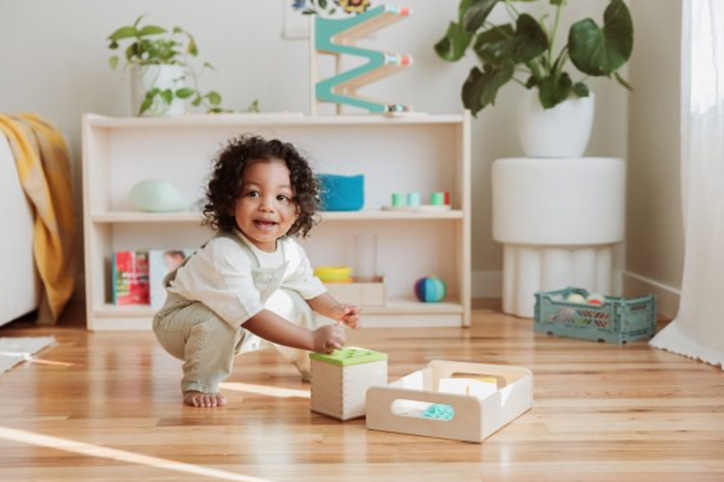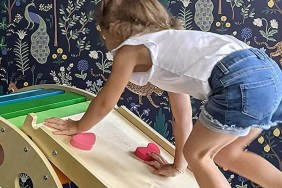I never thought I’d be one of those Moms sending their children to a Montessori school, but it can’t be a coincidence that the founders of Google, Amazon’s Jeff Bezos and many more of the world’s most successful people went to Montessori schools. It also can’t be a coincidence that many top tech execs and entrepreneurs are very strict about keeping their children away from tech, social media, etc. While it might be tempting to get the latest gadgets and flashy toys for our children, the value in going back to the basics can’t be over-stated – and in fact, those “basics” aren’t so basic. Montessori toys are incredibly deliberate and thoughtful and no one has perfected them better than Lovevery.
Lovevery’s Play Gym is AMAZING. You can use it from day 1 and I have yet to find a parent who has used it who doesn’t swear by it. What the brand is best known for however are their subscription Play Kits, which send stage-based play essentials for children’s developing brain. Their kits combine neuroscience with Montessori, so who better to ask about Montessori toys than CEO and co-founder Jessica Rolph. Read on to find out what the benefits of these special toys are and the “must-haves.”

Momtastic: What are signatures of Montessori toys?
Jessica Rolph: Montessori-aligned toys are made from natural materials like smooth polished wood or cold stainless steel to promote a sensory rich experience. You won’t find batteries or flashing lights and these toys are based on real life to help each individual child make sense of experiences they have had or will have themselves. Montessori toys focus on one skill at a time to avoid overwhelming the child and to stoke deeper learning. They also encourage independence by empowering children to care for themselves and their environment. Montessori toys nurture each child’s role as a capable member of their family and beyond.
Momtastic: What age range do Montessori toys cover?
Jessica Rolph: You can start interacting with your child using Montessori-aligned play things as soon as they’re born. For example, a high contrast Montessori ball, like this one in Lovevery’s Play Gym, can be used with newborns to practice tracking moving objects and sounds or rolled along the floor once they start tummy time in order to practice reaching and grasping. Montessori toys are also wonderful tools to support development in toddlers as well as pre-school and school-aged children. An individual child can even stay in a Montessori school or learning environment all the way through age 18.
For any child, Montessori toys can promote creative play and teach cause and effect in a way that other toys cannot. They support cognitive milestones, encourage speech development and build fine and gross motor skills.
Because a Montessori toy encourages concentration and has more uses than a regular toy, this means a child needs fewer toys. Less clutter not only benefits the child by allowing them to get deep into longer stretches of play, it’s also great for parents.
Momtastic: Can you highlight “must-have” Montessori toys and why they’re so great to help with development?
Jessica Rolph: Object permanence box: Around 7 months, a baby will start to remember objects from one appearance to the next. A ball dropped inside the box is only gone for a moment, which helps your baby learn that when objects can’t be seen, it doesn’t mean they’re necessarily gone forever, a concept called ‘object permanence’. I love this plaything because it allows each baby to practice so many different skills and they always love watching the ball disappear!
Toddler Pitcher: Toddlers love water play as a sensory experience and a grooved pitcher helps them develop precise hand-eye coordination and self-control. Pouring is also a great practical life skill that they can begin to practice at this age in a fun and engaging way.
Montessori Shelf: This is a great addition to any playroom or nursery and allows parents to easily incorporate Montessori play principles at home. Lovevery just launched a Montessori Playshelf. Ours includes hidden storage and trays to make toy rotation easy. Toy rotation is a classic Montessori technique where only a few toys are kept out at a time with the others put away out of sight. With fewer options, a child will engage more meaningfully with each toy, playing in a deeper way and spending more time exploring each item.







